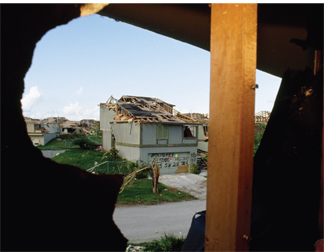 In its June 1978 issue, The Claimsman, the South Florida Claims Association's newsletter, had headlines such as “Catastrophe Record Set for 1978 First Quarter,” “Storm Inexperience Will Cause the Death Toll to Rise,” “The Real Flood School,” and “The Life of a Storm-Trooper.” It included photos of prior murderous storms named Camille, Beulah, Donna, Audrey and Hazel. There was an interview with Dr. Neal Frank of the Miami Hurricane Center and quotes from John D. MacDonald's novel Condominium. The issue also addressed the exclusions in “windstorm and hail” coverage in homeowners' forms and discussed the National Flood Insurance Act.
In its June 1978 issue, The Claimsman, the South Florida Claims Association's newsletter, had headlines such as “Catastrophe Record Set for 1978 First Quarter,” “Storm Inexperience Will Cause the Death Toll to Rise,” “The Real Flood School,” and “The Life of a Storm-Trooper.” It included photos of prior murderous storms named Camille, Beulah, Donna, Audrey and Hazel. There was an interview with Dr. Neal Frank of the Miami Hurricane Center and quotes from John D. MacDonald's novel Condominium. The issue also addressed the exclusions in “windstorm and hail” coverage in homeowners' forms and discussed the National Flood Insurance Act.
It showed an NFIP flood-level map of Miami in answer to the question, “If Miami gets a storm this season, what might we expect in terms of flooding?” The answer: “Expect to get your feet wet!” The accompanying map showed water-depth levels of up to 15 feet along the islands and three to four feet in the Miami River valley. South of Kendall Drive showed levels of three to 10 feet of flooding.
I wrote an article in that issue called “A Cry of 'Wolf'?” There, I suggested that too many citizens were complacent. Because a hurricane had not hit Miami in decades, these citizens thought it would not happen—at least in their lifetimes.
Recommended For You
Want to continue reading?
Become a Free PropertyCasualty360 Digital Reader
Your access to unlimited PropertyCasualty360 content isn’t changing.
Once you are an ALM digital member, you’ll receive:
- Breaking insurance news and analysis, on-site and via our newsletters and custom alerts
- Weekly Insurance Speak podcast featuring exclusive interviews with industry leaders
- Educational webcasts, white papers, and ebooks from industry thought leaders
- Critical converage of the employee benefits and financial advisory markets on our other ALM sites, BenefitsPRO and ThinkAdvisor
Already have an account? Sign In Now
© 2025 ALM Global, LLC, All Rights Reserved. Request academic re-use from www.copyright.com. All other uses, submit a request to [email protected]. For more information visit Asset & Logo Licensing.








